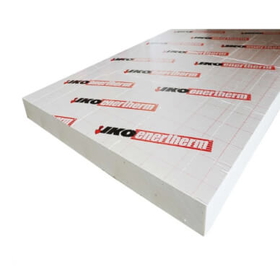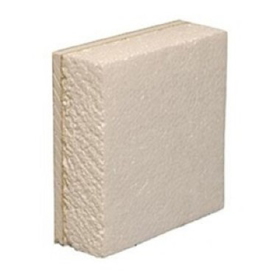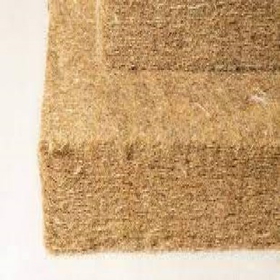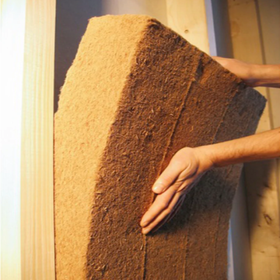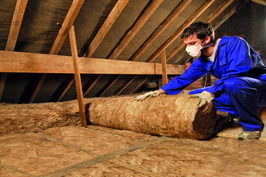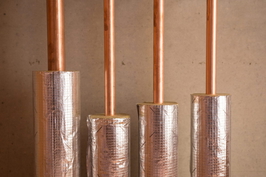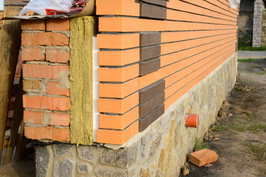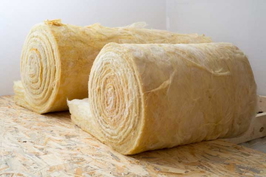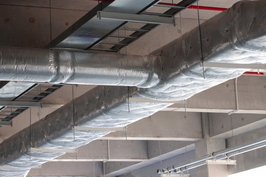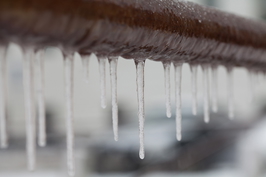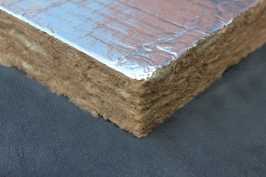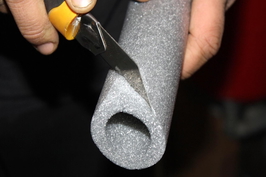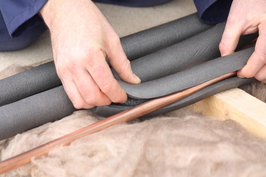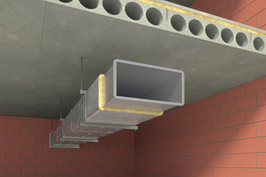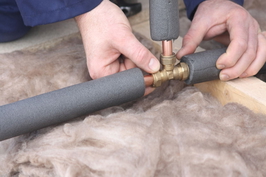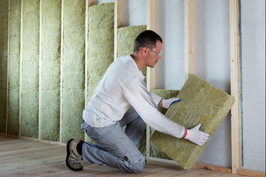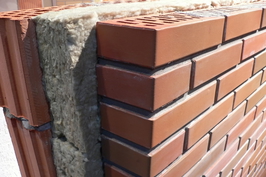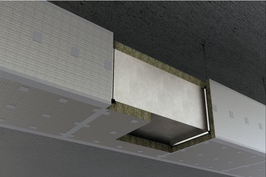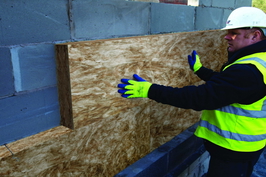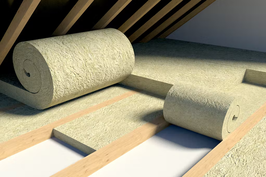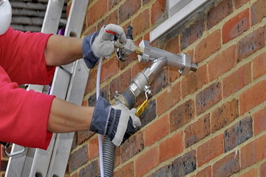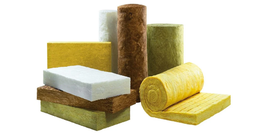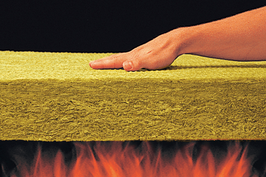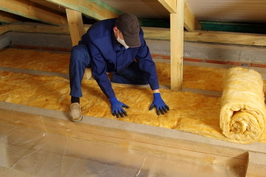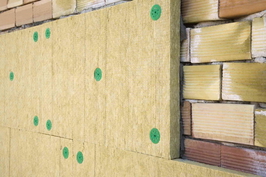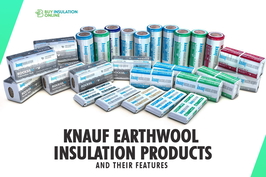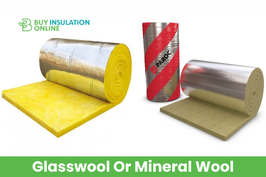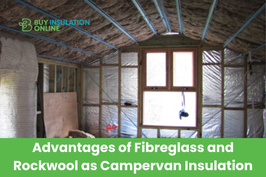Fibreglass Insulation
Discover the benefits of glass wool insulation - from lower energy costs to improved soundproofing. Explore our range today!
Looking for reliable and affordable fiberglass insulation? Check out our selection for nationwide delivery and top-rated service.
Enhance your home's energy efficiency with our range of fiberglass insulation. Perfect for timber frame walls and cladding systems.
Get all the information you need about different types of fibreglass insulation, including costs and installation methods, for your next project.
No Products Available...
Similar Categories
Fibreglass Insulation: Everything You Need to Know
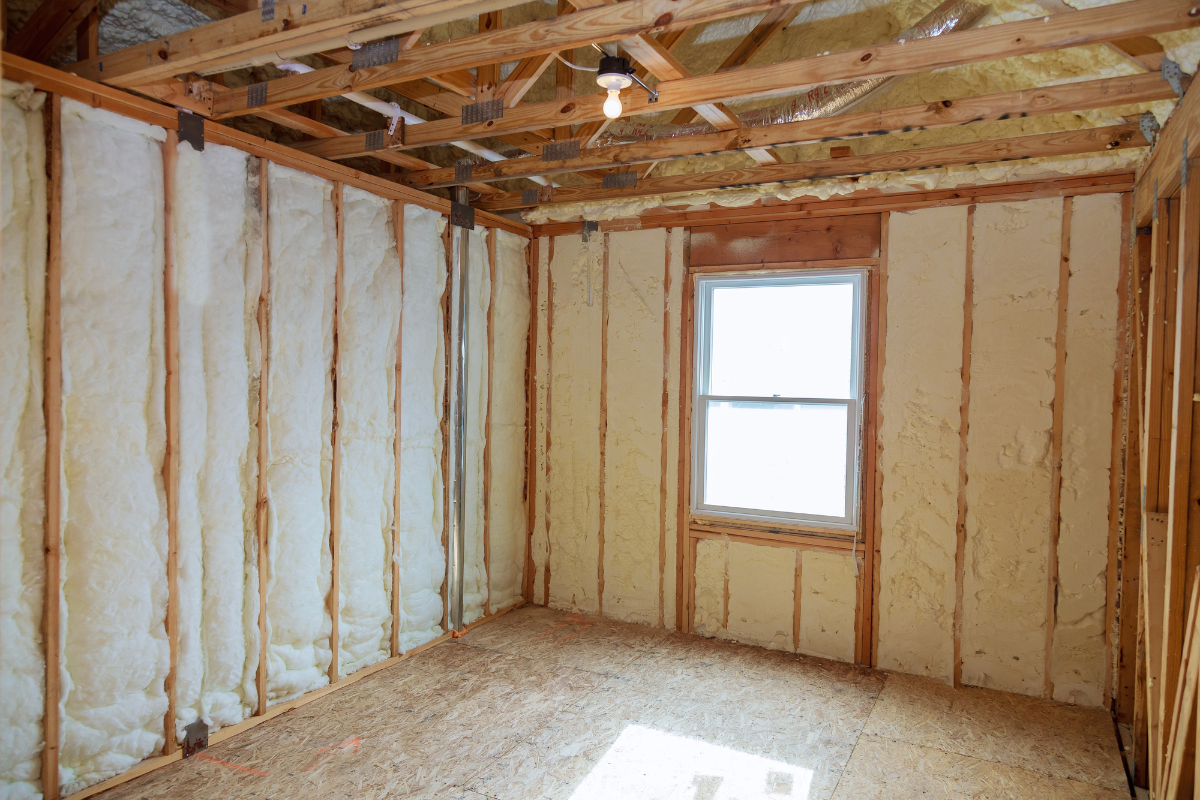
When it comes to insulating your home, choosing the right insulation material is crucial. One popular option that offers numerous benefits is fibreglass insulation also known as insulation batts. In this article, we will delve into everything you need to know about fibreglass insulation, from understanding its basics to learning how to properly install and maintain it.
What is Fibreglass Insulation and How Does it Work?
Fibreglass insulation is a type of thermal and acoustic insulation material that is made from recycled glass. It is commonly used in homes to insulate lofts, walls, and roofs.
The main component of fibreglass insulation is glass wool, which is a type of mineral wool insulation. The fibreglass insulation material is known for its thermal and acoustic insulation properties, making it an excellent choice for improving energy efficiency and reducing noise transmission.
Understanding the Basics
The fibreglass insulation consists of small glass fibers that are densely packed together. These fibers create tiny air pockets within the insulation material, which help to slow down heat transfer. As a result, fibreglass insulation acts as a barrier, preventing heat from escaping during colder months and entering during warmer months, thus maintaining a comfortable temperature inside your home.
The Science Behind Fibreglass Insulation
The science behind fibreglass insulation lies in the principles of conduction, convection, and radiation. Conduction is the process of heat transfer through solid materials. Fibreglass insulation minimizes heat conduction by creating air pockets that obstruct the flow of heat. Convection, on the other hand, involves the transfer of heat through the movement of liquids or gases.
The structure of fibreglass insulation also hampers heat convection by trapping air inside the material. Lastly, radiation is the transmission of heat through electromagnetic waves. The reflective surface of fibreglass insulation helps to prevent the transfer of radiant heat.
Benefits of Fibreglass Insulation
Fiberglass insulation has huge benefits, and there are several reasons why it is a popular choice for homeowners. Firstly, it is incredibly easy to install, making it a top choice for both professionals and DIY enthusiasts alike. Available in various forms, such as rolls or batts, fibreglass insulation can be effortlessly cut to fit into different spaces, ensuring a hassle-free installation process.
Additionally, fibreglass insulation is non-combustible and provides fire protection, making it a safe option for your home. Furthermore, fibreglass insulation is known for its durability and longevity, ensuring that it lasts for many years without losing its insulation properties.
In conclusion, fibreglass insulation works effectively to enhance thermal performance, provide fire protection, and offer long-lasting insulation benefits. Whether you are looking to improve the energy efficiency of your home or ensure a safe and durable insulation option, fibreglass insulation is a reliable choice.
Why Choose Fibreglass Insulation for Your Home?
Fibre glass insulation is an excellent choice for various parts of your home, including the attic, walls, roofs, and conservatory roofs. Here's why:
Attic Insulation: Fiberglass attic insulation helps to maintain a comfortable indoor temperature by preventing heat loss in the winter and heat gain in the summer. It contributes to energy efficiency and lowers utility bills.
Fiberglass Wall Insulation: Installing fibreglass wall insulation improves thermal and acoustic performance, making your home more comfortable and reducing noise transmission.
Roof Insulation: Fiberglass roof insulation enhances the energy efficiency of your home by preventing heat from escaping through the roof. It also helps to regulate indoor temperatures and reduce the need for excessive heating or cooling.
Conservatory Fibreglass Roof Insulation: Insulating a conservatory roof with fibreglass insulation can help to make the space more usable throughout the year, as it provides better temperature control and reduces temperature fluctuations.
Insulation Types: Which One is Right for You?
Before delving into the advantages of fibreglass insulation, it is crucial to understand the different types of insulation available.
Some common alternatives to fibreglass insulation include foam insulation and spray foam insulation. While these options have their own merits, fibreglass insulation offers a balanced combination of thermal and acoustic insulation, making it suitable for most homes.
Fibreglass Insulation Types and Uses
Fibreglass insulation is available in various forms to suit different insulation needs:
Fibreglass Insulation Rolls: Fibreglass insulation rolls are easy to handle and can be rolled out between studs or joists, providing an effective thermal barrier.
Fibreglass Batt Insulation: Similar to rolls, fibreglass batts are pre-cut insulation pieces designed to fit snugly between standard stud or joist spacings.
Fiberglass Insulation Boards: Fibreglass insulation boards offer rigid insulation for specific applications, such as insulating walls and attics.
Fibreglass Insulation Wholesale: If you have a large insulation project or need insulation in bulk, purchasing fibreglass insulation wholesale can be a cost-effective option.
Fibreglass Online Shop: Buying fibreglass insulation from an online shop offers convenience and a wide selection of products to choose from.
Indoor thermal and acoustic insulation
Indoor thermal and acoustic insulation is essential for creating a comfortable living environment by regulating temperature and reducing noise pollution. Several materials can be used for both thermal and acoustic insulation, and some of the common options include:
Fiberglass Insulation
Mineral Wool Insulation
Cellulose Insulation
Foam Insulation
Acoustic Panels
Soundproofing Sealants
When choosing indoor thermal and acoustic insulation, consider the R-value (thermal resistance), NRC (Noise Reduction Coefficient), and STC (Sound Transmission Class) ratings of the materials to ensure they meet your specific requirements. It's also essential to follow proper installation guidelines to maximize the effectiveness of the insulation.
Fiberglass Board Insulation and Rolls: A Versatile Solution for Efficient Insulation
Fiberglass board insulation and fiberglass insulation rolls are two versatile options that offer efficient solutions for insulation needs. Fiberglass board insulation provides a rigid and sturdy choice, making it ideal for specific applications like insulating walls and attics. These boards fit securely in place, creating a reliable thermal barrier. On the other hand, fiberglass insulation rolls offer flexibility and ease of installation. Available in various thicknesses and widths, fiberglass rolls can be easily cut to fit between studs or joists, making them suitable for insulating different areas in your home.
Wholesale Option for Cost-Effective Solutions
For larger projects or bulk insulation needs, consider purchasing fiberglass insulation wholesale. Buying in bulk can be a cost-effective solution, ensuring you have enough insulation material to complete your project efficiently. Many suppliers offer fiberglass insulation wholesale, making it a convenient option for contractors and DIY enthusiasts alike. However, when purchasing in bulk, ensure you have enough space for storage to keep the insulation in optimal condition until it is ready for installation.
Maximize Energy Efficiency with Fibreglass Loft Insulation
One of the most common areas in a home that benefits from fiberglass insulation is the loft or attic space. Fiberglass loft insulation effectively prevents heat from escaping through the roof, helping to maintain a comfortable indoor temperature. During colder months, fiberglass loft insulation keeps warmth inside, reducing the need for excessive heating and lowering energy bills. In warmer months, it helps to keep your home cooler by preventing heat from entering through the roof. Fiberglass loft insulation is available in rolls or batts, providing easy installation for both professionals and homeowners.
Discover the Benefits of Fiberglass Roll Insulation
Fiberglass roll insulation is a popular choice for many insulation projects due to its flexibility and adaptability. It can be used in walls, ceilings, floors, and roofs, providing effective thermal and acoustic insulation. The ease of installation and customizability make fiberglass roll insulation a preferred option for improving energy efficiency and creating a comfortable living environment. When installing fiberglass roll insulation, ensure it fits snugly without compression or gaps to achieve its maximum insulation performance.
In summary, fiberglass board insulation, fiberglass insulation rolls, and wholesale options provide versatile and cost-effective solutions for efficient insulation in your home. Whether you choose rigid boards or flexible rolls, fiberglass insulation offers excellent thermal and acoustic properties, contributing to energy efficiency and overall comfort. Whether you are a homeowner or a contractor, consider fiberglass insulation for your next insulation project to enjoy its numerous benefits and create a well-insulated and sustainable living space.
Fibreglasss insulation vs. Glass wool insulation
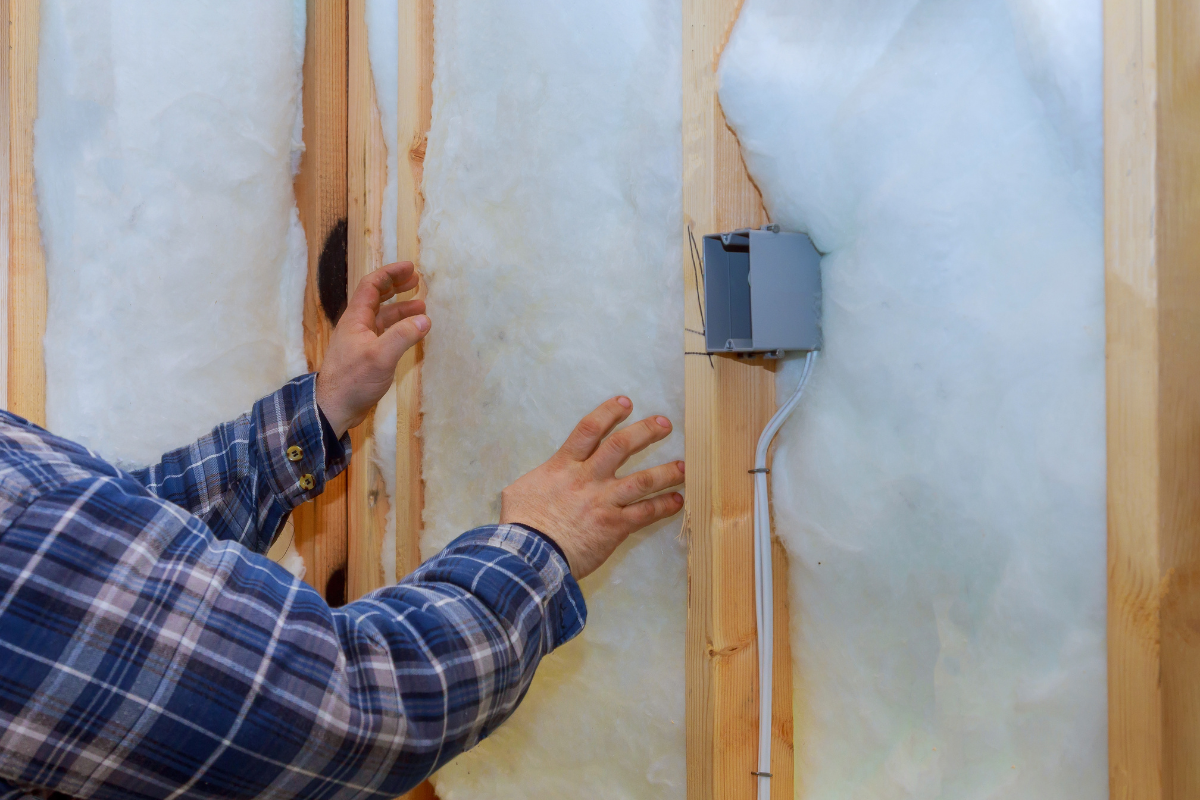
Glass wool insulation and fiberglass insulation are two types of thermal insulating materials commonly used in construction and various industries. While they share some similarities, they also have distinct differences. Here are the main differences between glass wool insulation and fiberglass insulation:
-
Composition and Manufacturing:
- Glass Wool Insulation: Glass wool is made from recycled glass, typically mixed with binders and additives. The glass is melted and then spun into fine fibers using a process similar to cotton candy production. The fibers are then collected and compressed into rolls, batts, or loose-fill products.
- Fiberglass Insulation: Fiberglass insulation is also made from glass, but the glass used is usually new rather than recycled. The manufacturing process involves drawing molten glass into fibers through tiny holes, creating a thread-like material. These fibers are then processed into insulation materials like rolls, batts, and blown-in insulation.
-
Density and R-Value:
- Glass Wool Insulation: Glass wool insulation tends to be denser than fiberglass insulation, which can make it slightly more effective in terms of thermal performance (R-value) for the same thickness. R-value measures the material's resistance to heat transfer, with higher R-values indicating better insulating properties.
- Fiberglass Insulation: Fiberglass insulation is generally less dense than glass wool, but it still provides good thermal insulation. The R-value of fiberglass insulation is typically slightly lower than that of glass wool for the same thickness.
-
Application and Uses:
- Glass Wool Insulation: Glass wool insulation is suitable for a wide range of applications, including residential and commercial buildings, industrial facilities, and HVAC systems. It is commonly used in areas where high thermal performance is required, such as in walls, ceilings, roofs, and floors.
- Fiberglass Insulation: Fiberglass insulation is one of the most popular and widely used insulation materials. It is found in residential and commercial construction, as well as in automotive, marine, and aerospace industries. Fiberglass insulation is commonly used in walls, attics, crawl spaces, and as blown-in insulation for hard-to-reach areas.
-
Handling and Health Considerations:
- Glass Wool Insulation: Glass wool insulation fibers can be irritating to the skin and respiratory system if not handled properly. It is essential to use protective clothing, masks, and gloves during installation to prevent contact with the fibers.
- Fiberglass Insulation: Similar to glass wool, fiberglass insulation can also cause skin irritation and respiratory issues if the fibers come into direct contact with the skin or are inhaled. Proper safety precautions, such as wearing protective gear during installation, are necessary.
In summary, both glass wool insulation and fiberglass insulation are effective thermal insulating materials with similar properties. The main differences lie in their composition, manufacturing processes, density, and specific applications. When choosing between the two, factors like R-value requirements, intended use, and handling precautions should be considered.
Fibreglass vs. Other Insulation Materials
One of the key advantages of fibreglass insulation is its affordability compared to other insulation materials. Fibreglass insulation is widely available and is relatively cost-effective, making it an attractive option for homeowners looking to improve energy efficiency without breaking the bank.
Additionally, fibreglass insulation is made from recycled glass, making it an environmentally friendly choice.
Key Features and Advantages
In addition to its affordability and eco-friendly nature, fibreglass insulation offers several other advantages. It effectively reduces energy bills by minimizing heat transfer and improving thermal efficiency.
By creating a barrier against external temperatures, fibreglass insulation helps to maintain a comfortable indoor climate throughout the year. Furthermore, fibreglass insulation is resistant to moisture and mold growth, ensuring a healthy living environment within your home.
Although Fiberglass Insulation has huge benefits it is worth mentioning that coming in contact with small particles of Fiberglass can cause itchiness, irritation, and rashes.
How to Install Fibreglass Insulation Properly?
The proper installation of fibreglass insulation is essential to ensure its maximum effectiveness. By following the correct installation process, you can achieve the desired insulation performance and enjoy the benefits of fibreglass insulation.
Although the installation of fiberglass insulation can significantly improve the energy efficiency of a building, fibreglass insulation is an excellent material for enhancing thermal performance. Fiberglass insulation has been used in various applications due to its effectiveness in reducing heat transfer and providing energy-saving benefits. Fiberglass makes it a popular choice for insulation in many construction projects. it is essential to follow the correct installation process to ensure its maximum effectiveness. By taking necessary safety precautions and following the step-by-step guide, you can achieve the desired insulation performance and enjoy the benefits of fiberglass insulation.
Preparation and Safety Measures
Prior to installing fibreglass insulation, it is important to take necessary safety precautions. Fibreglass insulation can cause skin and respiratory irritation, so it is recommended to wear gloves, long sleeves, and a mask during the installation process. It is also crucial to ensure proper ventilation when working with fibreglass insulation.
Step-by-Step Installation Guide
The installation process for fibreglass insulation depends on the specific area you wish to insulate.
Whether it's a loft, wall, or roof, the general steps are similar. Firstly, measure the area to determine the amount of insulation material you will need. Then, cut the fibreglass insulation rolls or batts to fit the space.
Remember to leave room for any necessary gaps, as completely sealing an area can lead to moisture issues. Lastly, carefully place the fibreglass insulation, ensuring there are no gaps or compressed areas. Properly installed fibreglass insulation should be snug and fill the area evenly to achieve optimal insulation performance.
Dealing with Common Installation Issues
During the installation process, you may encounter some common issues that can affect the performance of fibreglass insulation. Some of these issues include compression, insufficient coverage, and air leaks. Compression occurs when the insulation material is compacted, reducing its insulation effectiveness.
To avoid compression, be careful not to press or overlap the fibreglass insulation too tightly. Insufficient coverage refers to leaving gaps or not covering the entire area, compromising the insulation's effectiveness. Lastly, air leaks can occur if there are gaps or unsealed areas in the insulation. To prevent air leaks, ensure that the fibreglass insulation fits snugly and seal any gaps or cracks with appropriate sealing materials.
Top Tips for Choosing the Best Fibreglass Insulation
When selecting fibreglass insulation for your home, there are a few key factors to consider to ensure you make the best choice.
Understanding Different R-Values
The R-value is a measure of an insulation material's thermal resistance. The higher the R-value, the better the insulation's effectiveness. Assess the R-value requirements for your specific area and choose fibreglass insulation with an appropriate R-value to achieve optimal energy efficiency.
Considering Energy Efficiency
Energy efficiency is an important consideration when selecting fibreglass insulation. Look for insulation products that have been designed with energy efficiency in mind. These products often incorporate additional features, such as reflective surfaces, to further enhance their insulation performance.
Factors to Consider Before Purchasing
Before purchasing fibreglass insulation, think about your specific requirements. Consider factors such as the area you want to insulate, any specific insulation regulations or requirements in your region, and your budget. By taking these factors into account, you can choose the right fibreglass insulation product that matches your needs.
Maintaining and Upgrading Fibreglass Insulation
To ensure the long-term performance and effectiveness of your fibreglass insulation, proper maintenance and occasional upgrades may be required.
Inspecting for Damage and Wear
Regularly inspect your fibreglass insulation to check for any signs of damage or wear. Look for compressions, gaps, or areas that may have been compromised. If any issues are identified, it is important to address them promptly to maintain the optimal insulation performance of your fibreglass insulation.
Upgrading to Higher Efficiency Insulation
Over time, advancements in insulation technology may offer higher efficiency options. Consider upgrading your fibreglass insulation if there are new products available that provide superior insulation performance. An upgrade can help to further improve energy efficiency and reduce your overall energy consumption.
Handling Long-Term Maintenance
Maintaining fibreglass insulation involves simple tasks such as keeping the insulation area clean and free from debris. Avoid placing heavy objects on the insulation, which may cause compression. Additionally, if any remodeling work is done in the insulated area, ensure that the insulation is properly reinstalled or upgraded to maintain its insulation effectiveness.
Installing Fibreglass Insulation
Tools and Safety
- Tape measure
- Utility knife
- Boxes for electrical outlets
- Access to drains
Safety Equipment:
- Respirator (to prevent inhalation of fiberglass particles)
- Safety glasses
- Gloves
- Long-sleeve shirts, pants, and boots (to cover skin during installation)
Step-by-Step Installation Guide
1. Wall Insulation
- Measure the height of the wall and cut the fiberglass insulation to the required length.
- Cut out a small box in the insulation to fit around electrical boxes.
- Install the insulation, ensuring it fits snugly between the studs, without creasing or forcing it in.
- For wires or obstructions in the wall, cut around them to avoid compressing the insulation.
2. Ceiling Insulation
- Measure and cut the insulation to fit between the ceiling joists.
- When encountering obstructions like HVAC runs or wires, cut around them to ensure a proper fit.
- Insert the insulation, making sure it does not compress, and staple it to the joists to hold it in place.
Where can you buy fibreglass online?
You can buy fibreglass insulation here at Buy Insulation Online.
Key Takeaway
Insulating your space with fiberglass insulation is an effective way to improve energy efficiency, maintain comfortable temperatures, and reduce sound transmission. Understanding the different types of insulation, local building codes, and using the right tools and safety equipment are crucial steps in achieving successful installation. By following the step-by-step guide, you can insulate your new construction space like a professional, ensuring long-lasting benefits for your home.
Q: What is fiberglass insulation?
A: Fiberglass insulation is a type of insulation made from tiny glass fibers. It is commonly used to insulate homes and buildings, as it helps to reduce heat loss and increase energy efficiency.
Q: What are the advantages of fiberglass insulation?
A: Fiberglass insulation has several benefits. It is non-combustible, meaning it does not catch fire easily. It is also resistant to moisture and mold growth. Additionally, fiberglass insulation is easy to install and can help reduce energy bills by keeping the home well-insulated.
Q: How does fiberglass insulation work?
A: Fiberglass insulation works by trapping pockets of air within its fibers. This helps to slow down the transfer of heat from one side of the insulation to the other. The more air that is trapped, the better the insulation's thermal performance.
Q: What is the difference between fiberglass insulation and mineral wool?
A: Fiberglass insulation and mineral wool are both types of wool insulation, but they are made from different materials. Fiberglass insulation is made from glass fibers, while mineral wool is made from various minerals such as basalt or slag.
Q: Can I use fiberglass insulation in walls?
A: Yes, fiberglass insulation can be used in walls. It is available in batts or rolls, which can be cut to fit between wall studs. Fiberglass insulation is a popular choice for wall insulation due to its ease of installation and effectiveness in reducing heat transfer.
Q: Can I install fiberglass insulation myself?
A: Yes, you can install fiberglass insulation yourself if you have the necessary tools and knowledge. However, it is recommended to hire a professional insulation contractor for larger projects or if you are not confident in your ability to install it correctly.
Q: Is vapor barrier necessary when installing fiberglass insulation?
A: A vapor barrier is not always necessary when installing fiberglass insulation. It depends on the specific needs of your building and climate. In some cases, a vapor barrier can help prevent moisture from entering the insulation, but it is best to consult with a professional to determine if it is necessary.
Q: How do I buy fiberglass insulation?
A: Fiberglass insulation is widely available at home improvement stores and building supply centers. You can also purchase it online from various retailers. When buying fiberglass insulation, be sure to consider the R-value and thickness that best suits your insulation needs.
Q: How do I know if fiberglass insulation is the best choice for my project?
A: Fiberglass insulation is an excellent choice for most insulation projects. However, factors such as budget, specific insulation requirements, and building codes may affect your decision. It is advisable to consult with an insulation professional to determine the best insulation option for your project.
Q: Are there any safety concerns associated with fiberglass insulation?
A: While fiberglass insulation is generally safe to use, it is important to follow proper safety precautions. When handling fiberglass insulation, it is recommended to wear protective gloves, goggles, and a mask to prevent irritation to the skin, eyes, and lungs. It is also important to avoid contact with small particles of fiberglass, as they can cause skin irritation.
Q: Is modern fiberglass insulation safe?
Modern fiberglass insulation is considered safe when installed and used correctly. Fiberglass insulation is made from small glass fibers that are woven together to create a soft and flexible material. It is commonly used in residential and commercial buildings to improve energy efficiency and maintain comfortable indoor temperatures.
When properly installed and not disturbed, fiberglass insulation poses little to no health risks. However, it's important to handle fiberglass insulation with care to avoid potential skin irritation or respiratory issues. The fibers can be irritating if they come into contact with the skin, eyes, or lungs. Therefore, it's advisable to wear appropriate protective gear, such as gloves, long-sleeved clothing, and a mask, when handling fiberglass insulation.
What type of loft insulation do I need?
The type of loft insulation you need depends on various factors, including your location, the construction of your home, your budget, and your specific insulation requirements. Here are some common types of loft insulation:
Fiberglass Insulation: Fiberglass insulation, also known as glass wool, is one of the most common types of loft insulation. It comes in rolls or batts and is relatively easy to install. Fiberglass insulation is effective in reducing heat loss and is widely available.
Mineral Wool Insulation: Mineral wool, sometimes referred to as rock wool, is another popular loft insulation material. It is made from natural or recycled materials and provides good thermal and acoustic properties.
Cellulose Insulation: Cellulose insulation is made from recycled paper and treated with fire-retardant chemicals. It is blown into the loft space using specialized equipment, providing effective coverage and reducing air leakage.
Spray Foam Insulation: Spray foam insulation is a versatile option that can be used in various applications, including loft insulation. It is applied as a liquid that expands and hardens, creating an airtight seal and excellent thermal resistance.
Reflective Foil Insulation: Reflective foil insulation consists of layers of aluminum foil and air pockets. It reflects radiant heat and is often used in combination with other insulation materials for enhanced thermal performance.
Natural Fiber Insulation: Materials like sheep's wool and hemp can be used as natural fiber insulation options. They are eco-friendly and can provide good thermal performance.
When choosing the type of loft insulation, consider factors such as the R-value (thermal resistance), moisture resistance, fire-retardant properties, and any environmental concerns you may have. It's essential to follow local building codes and regulations and, if needed, consult with a professional insulation contractor to assess your home's specific insulation needs and recommend the best type of insulation for your situation.
Whether you're insulating a new construction, upgrading existing insulation, or considering a conservatory roof insulation project, fibreglass insulation is a reliable option. Remember to follow proper installation guidelines, take necessary safety precautions, and choose the right type and R-value of fibreglass insulation to ensure optimal insulation performance and long-lasting benefits for your home.
